It’s one of Europe’s great gateways, but before embarking on a continental adventure, enjoy a leisurely stay in Frankfurt.
What are the best things to do and see in Frankfurt? At the heart of Western Europe, Germany’s financial centre offers quick and easy connections to a plethora of enchanting destinations, courtesy of the masterly integration of the railway with Frankfurt Airport. But before making tracks on a grand rail romp with your Eurail Pass, why not give this great European gateway a leisurely exploratory, while shaking off the jet lag? It’s a city where medieval architectural confections mingle with contemporary architecture. But it’s the city’s old bones that commanded my attention.
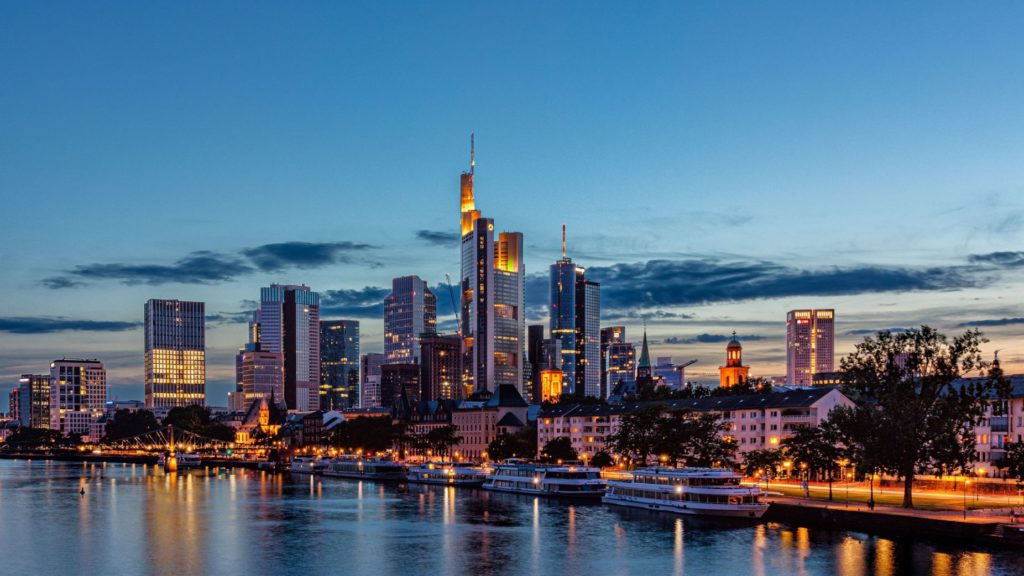
Medieval structures line the riverbanks of the Main, backed by glinting skyscrapers reaching ever higher to the heavens, giving rise to Frankfurt’s nickname, “Mainhattan.” (The city has the biggest concentration of skyscrapers in continental Western Europe.) For a great 360 city panorama, head up the Main Tower, which boasts an observation platform on the 55th floor. It was Deutsche Bank that kicked off the skyscraper craze, challenging other banks to reach for the sky. The twin towers of Deutsche Bank were built in 1984, attracting the endearing local nickname of “Credit and Debit.”
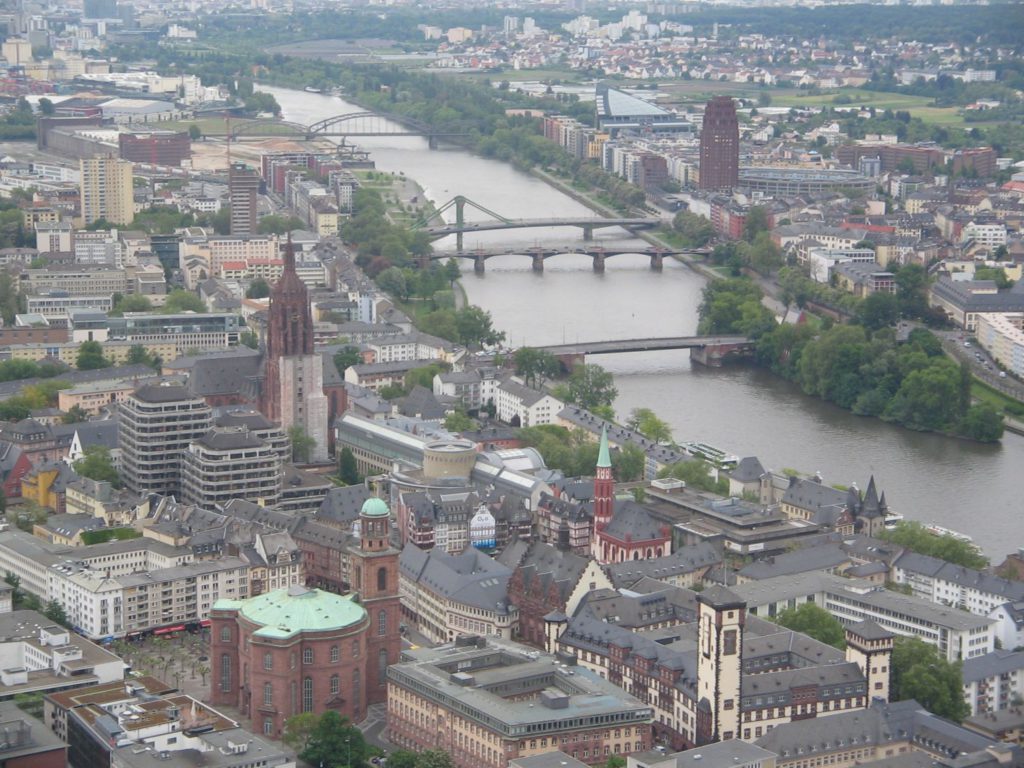
Adjacent to the to the business district, the high-end residential district of the Westend is lovely to stroll through, ogling the palatial 19th century villas. But much of Frankfurt’s medieval texture in the Altstadt (Old Town) is not as old as it looks – painfully reconstructed post-WWII. Such meticulous, impeccable attention to detail will leave you scratching your head as to whether the gabled roofs and timbered facades are merely reproductions or the medieval originals. Remarkably the full reconstruction of the historic district was only finished off five years ago.
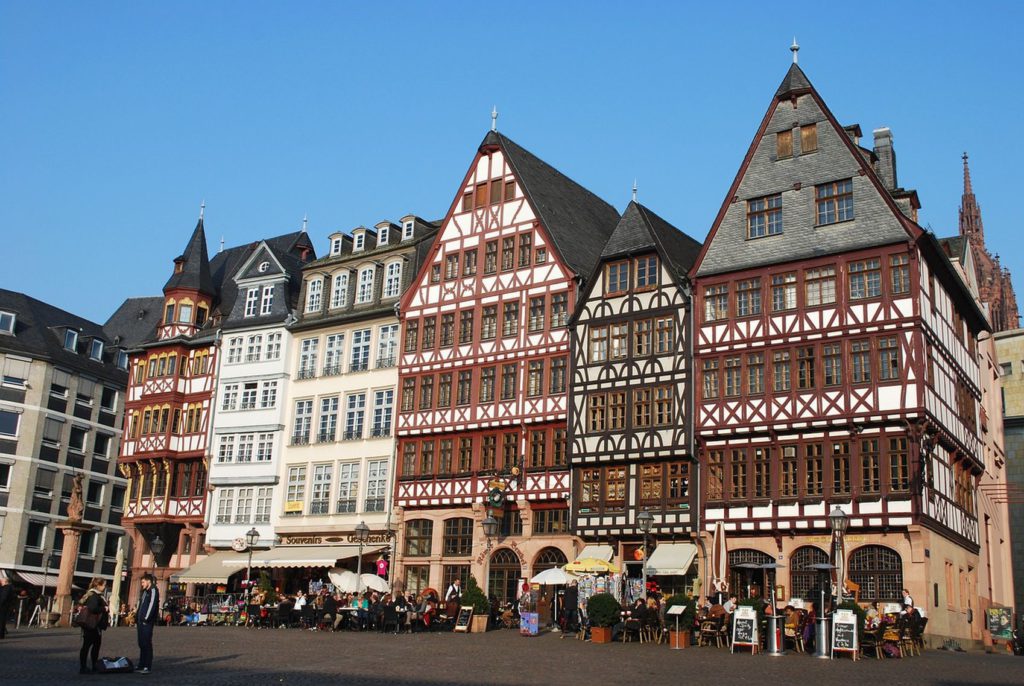
The headline attraction is Romerberg, the quintessential town square, where the timeless ambience and cluster of medieval timbered buildings gets the cameras clicking. Following a coronation at the Dom, the celebration banquets for over 50 kings in the Holy Roman Empire were all held in the imperial hall (Kaisersaal) which the city purchased in 1405, as the town hall. Ever since, this gorgeous three-gabled architectural landmark has maintained its civic stripes with the city council holding its meetings here.
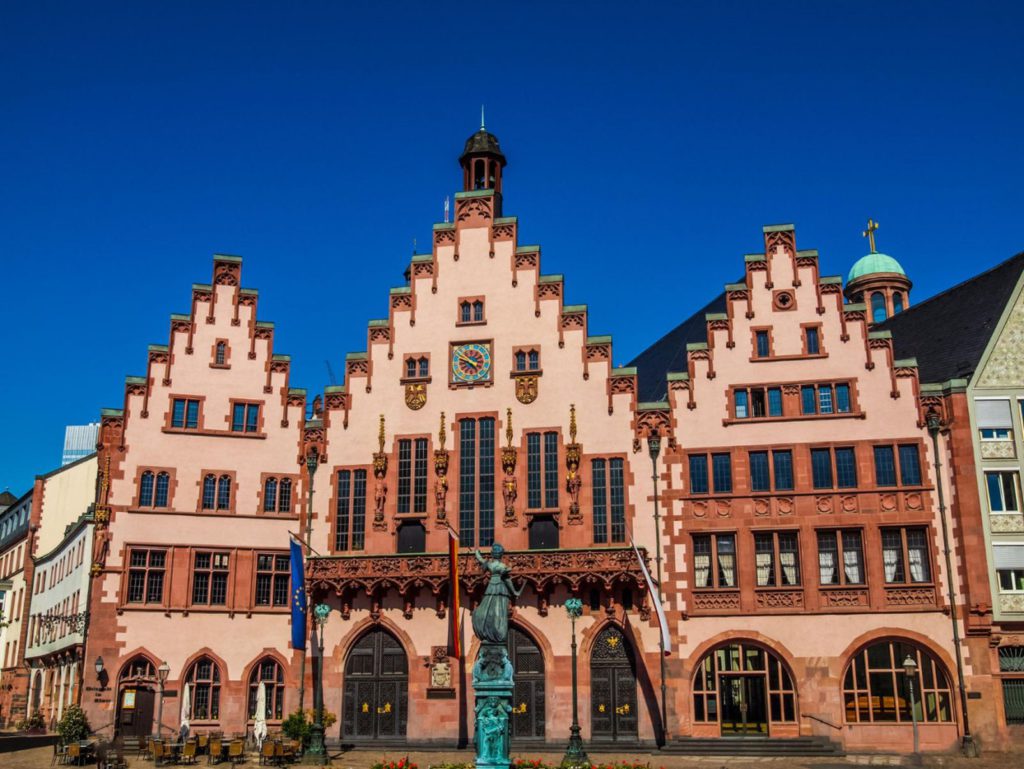
Come late November, the Romerberg will be twinkling with the magic of fairy lights and wooden chalets, as the annual Christmas Market sends spirits soaring. Suffused in the sensory joys of Christmas, not only is this one of Europe’s largest festive markets, but one of the oldest – first staged in 1393. Traditions abound amongst the vendors, selling a veritable sleigh-load of seasonal gifts and ornaments from hand-painted glass baubles to wooden nutcrackers, while the steaming gluhwein and roasted chestnuts always does a roaring trade.
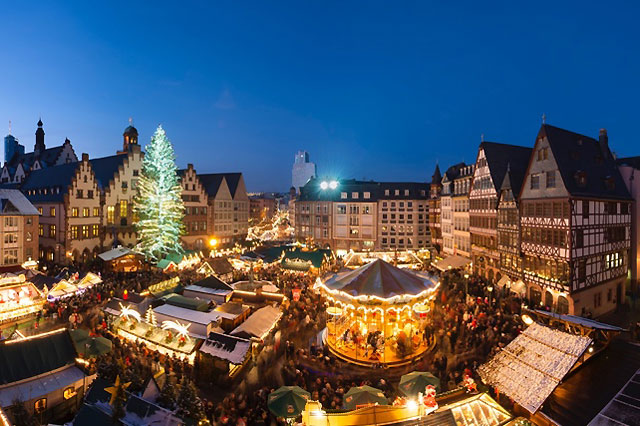
A quirky gem tucked behind Romerberg is the little lane of Saalgasse. It is lined with wacky looking, pencil-thin, four storey houses, which were the winning entries in a 1980s art competition for cutting-edge designer townhouses. They are anything but cookie cutter, with brilliantly distinctive exteriors. Despite the city being almost completely decimated during World War II, somehow the Dom, officially known as St. Bartholomew’s Cathedral, avoided being bombed. This heaving pink sandstone Gothic behemoth is where 52 Holy Roman Emperors were crowned from 1356 onwards. It’s a place decorated with all the trappings of royalty, with exquisite stone and glasswork. Admission is free and a must-see.
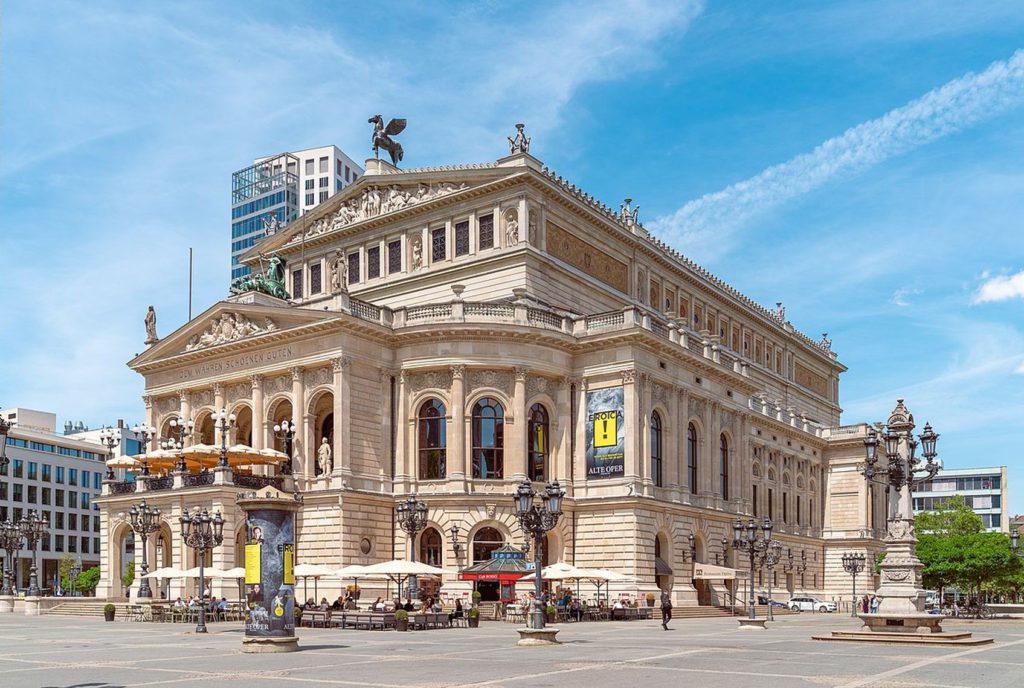
Further afield, the ornate Frankfurt Opera House is one of my favourite landmarks – every bit as splendid as its Vienna or Paris siblings. Laid to waste in WWII, it was nicknamed Germany’s Most Beautiful Ruin for decades until it was finally restored in the 1980s. A splendid place to sleep off the jetlag is the Sofitel Frankfurt Opera. Exemplifying the landmark French-style hospitality the Sofitel is renowned for, this 5-star luxury hotel is perfectly poised alongside the opera house in the New Old Town district.

This stylish hotel shines in elegant Parisian chic with eye-catching designs throughout the hotel, a superb restaurant with seasonal regional accents, on-site spa with extra-pampering and exceptional customer service. The convivial staff treated me royally. All rooms and suites are furnished in French style with free wifi, cable TV and a dream-worthy Sofitel MyBed. It’s the perfect place to recharge, post-flight. https://www.sofitel-frankfurt.com/
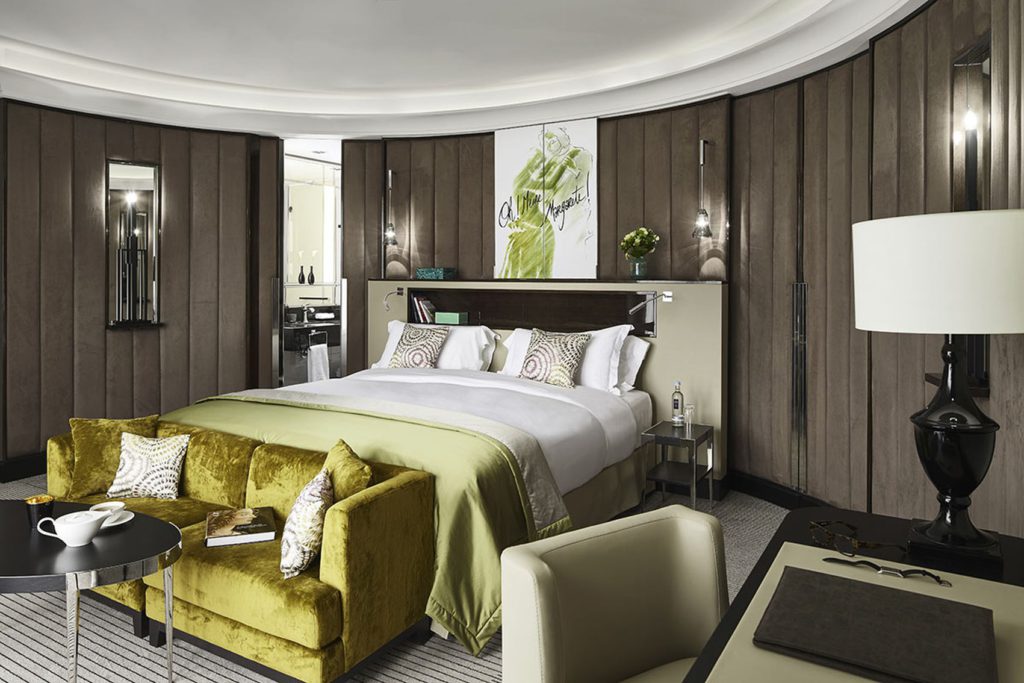
Art and culture lovers should make a beeline to the embankment district. Draping the banks of the Main River, a veritable feast of museums and art galleries await your exploration, including the fabulous Architecture Museum which traces the development of architecture from primitive huts to gleaming skyscrapers. Johann Wolfgang von Goethe is Frankfurt’s most famous son, born in the city in 1749.
The philosopher and writer is regarded as Germany’s Shakespeare, and not far from Romerberg you can visit his family home, a splendidly period furnished Baroque mansion which is now the Goethe Museum. He once wrote, “offer plenty and you will surely please some.” His hometown seems to have taken that to heart.
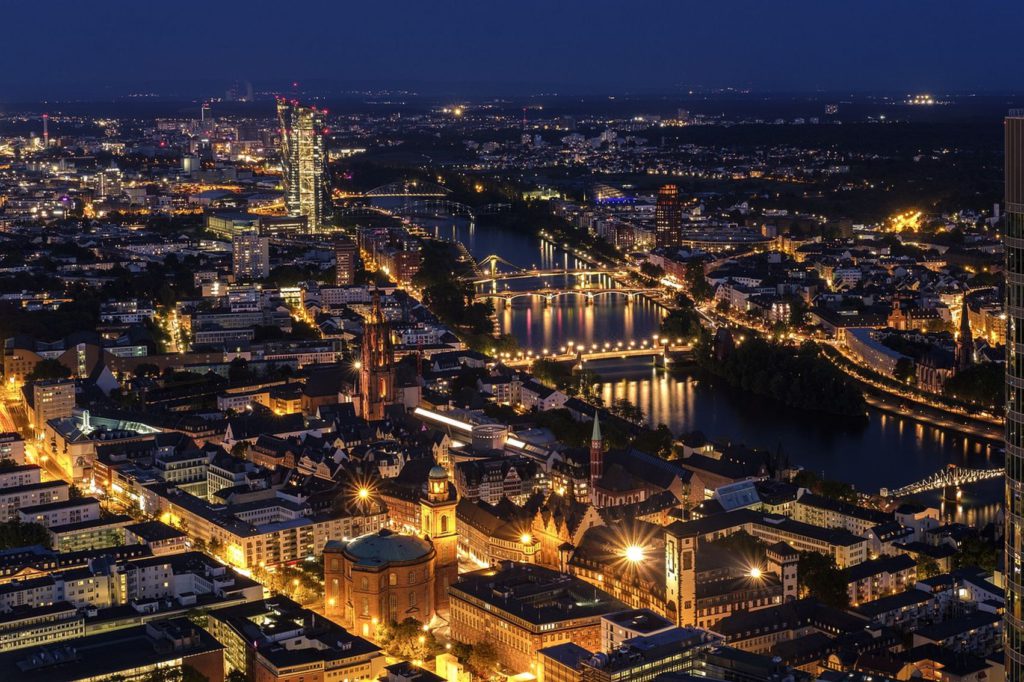
Crossing the Main River, Alte Brücke (old bridge) is my favourite Frankfurt bridge, a mighty red sandstone behemoth, with the stone sourced from the Rhine Valley. It is the oldest bridge over the lower course of the river Main, and until 1886 was the only stone bridge crossing the river. Since its first mention in official documents in 1222, it has been central to Frankfurt’s story. A gilded rooster marks the former public execution site on the bridge, while during WWII the Germans bombed the middle arches to try and halt the advance of the Allied troops. They failed and three days later the United States Army had taken control of the city. Over the centuries, Alte Brücke has been destroyed and reconstructed at least 18 times.
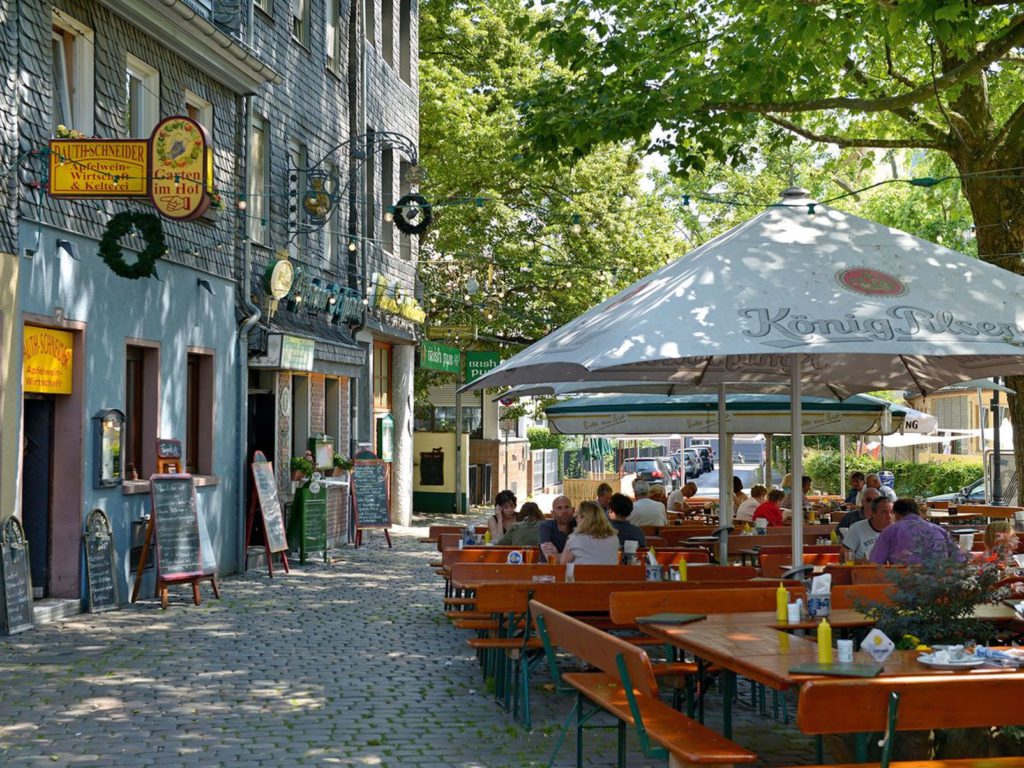
For an authentic Frankfurt experience, head to the labyrinth of rustic little laneways in Sachsenhausen district, replete with the best traditional apple cider taverns in the city. Colloquially known as “Ebbelwei”, apple wine has been Frankfurt’s most popular beverage for over 250 years. Averaging about 5% alcohol content, it’s certainly different to cider, with a sourer, tartier taste. This traditional brew doesn’t attract excise tax. Cheers!
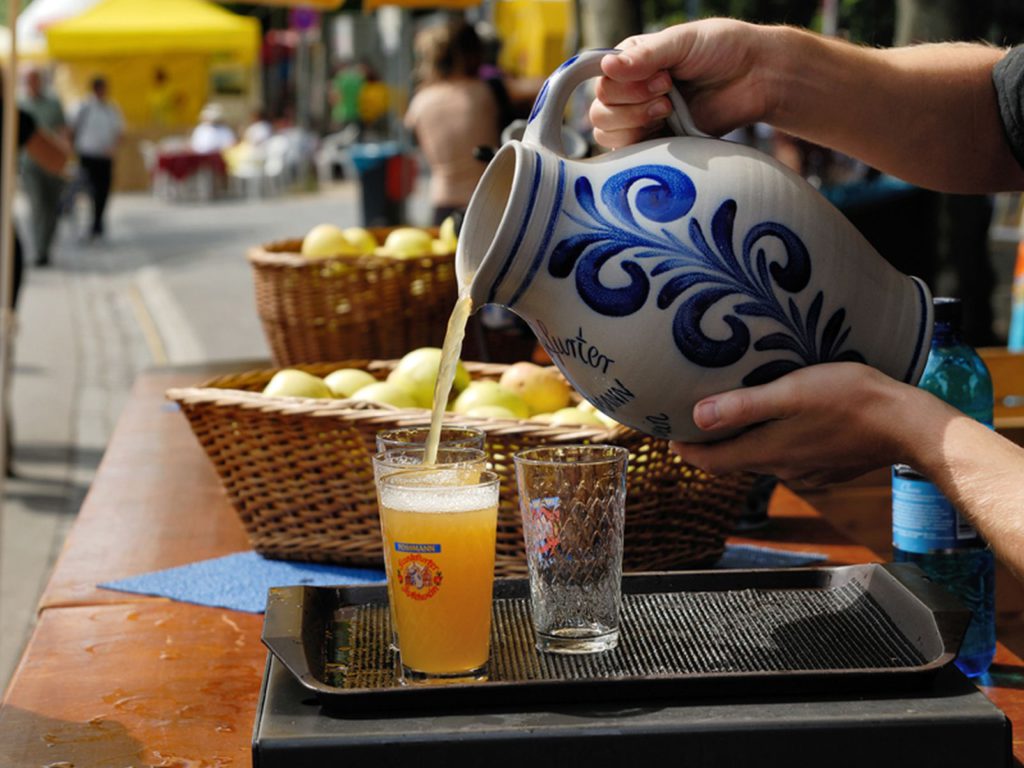
What are some signature tastes worth sampling? Frankfurt Green Sauce is a city specialty. It’s served cold over hard-boiled eggs and boiled potatoes. And the sauce is made from seven different kinds of herbs: borage, chervil, cress, parsley, salad burnet, sorrel and chives. Frankfurt Crown Cake was created by an unknown master baker three hundred years ago. This butter-crème cake symbolises a crown, with golden brittle placed around the outside and jewel-like cherries as decoration. Frankfurt was seen as the “crown city” of the German Empire for many years. I do like how many Germans eat cake for breakfast. I approve.
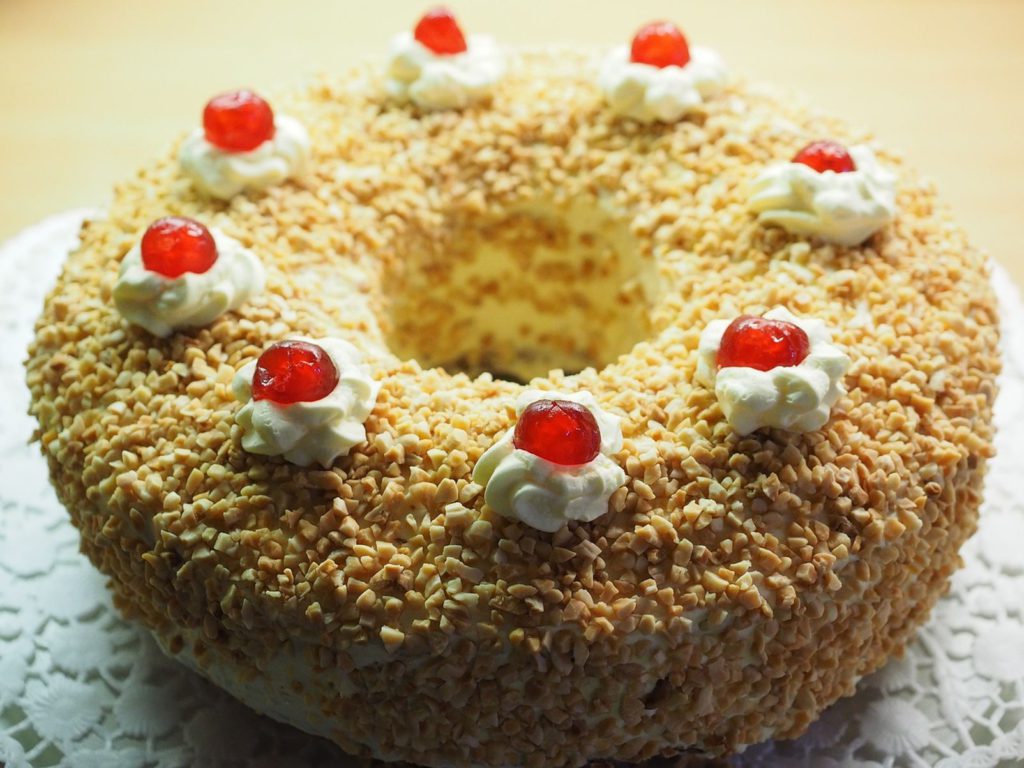
Need some retail therapy? The Zeil is a 2km-long vehicle-free promenade that snakes its way through the heart of city. I first visited Frankfurt in 2009, and My Zeil, a futuristic shopping mall had just opened. 13 years on, it still looks ultra-modern and has been expanded. Not only does it have Europe’s longest escalator, transporting you up five floors non-stop, but the edgy interior design is enthralling. The glass bubble-like ceiling and wall features resemble a huge curved glass vortex starting on the ground floor and reaching the roof. You’ll love it.
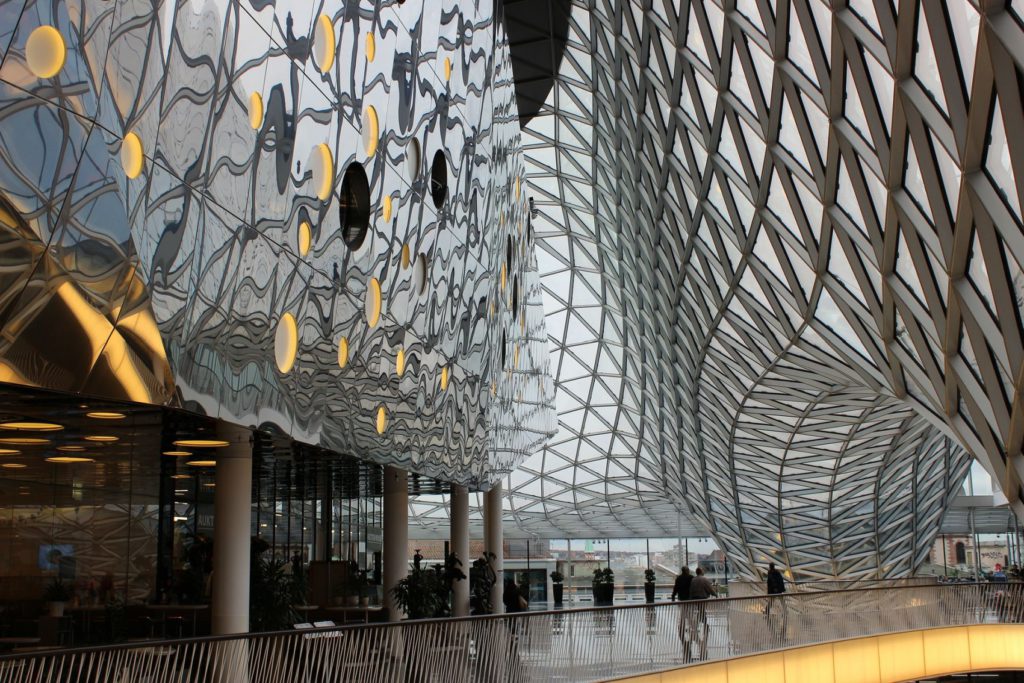
If you’re up for something truly quirky, check out Frankfurt’s Peeing Tree, the Pinkelbaum. It’s an artwork installed within an old maple tree that reeks of nature’s revenge. A plaque near the tree reads (translated from German): “For 300 years I have been pissed on, starting today I piss back.” As you walk towards it, the tree looks totally innocuous. But once you get close, you’re in for a good hosing. Most unsuspecting people, after recovering from the surprise, find it rather enchanting. You’ll find it at the city’s little lake of Jacobiweiher. The pee stream only takes a break in winter, to prevent frost damage.
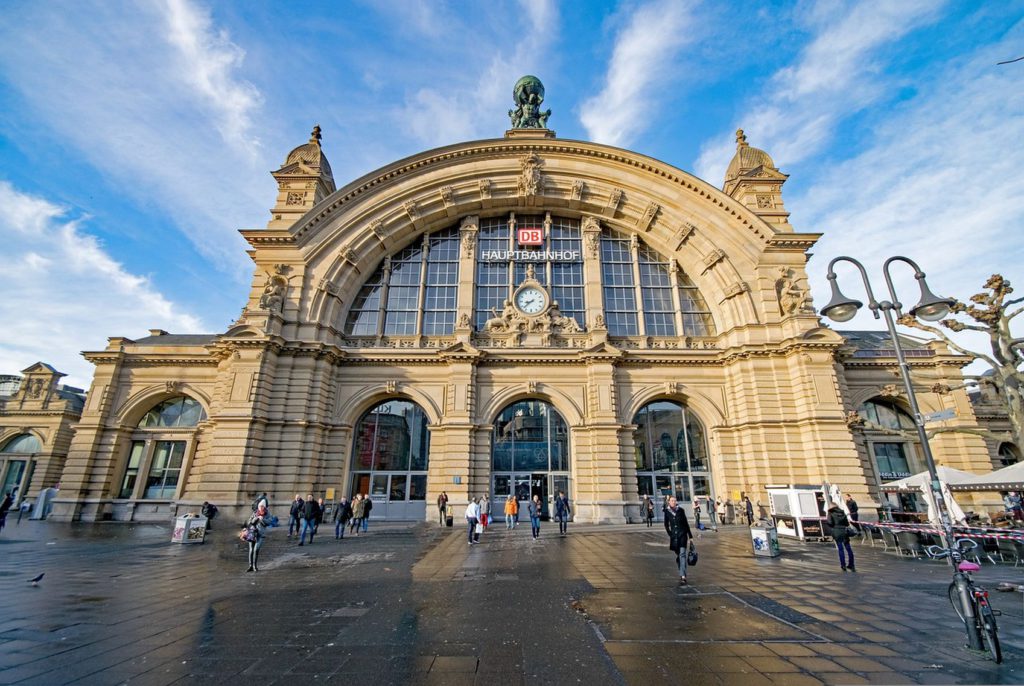
German trains continue to raise the bar on slick, comfy and efficient public transport. On popular rail routes, it certainly pays to make a seat reservation in advance. Lock in your rail plans ahead of your trip, by booking tickets or a rail pass to suit with Eurail direct. The mobile pass is the way to go. The Eurail app is an excellent initiative, packed with helpful information and benefits, notifying you of any network disruption and enabling you to check timetables, lock in bookings and seat reservations on the go, via your mobile. www.eurail.com
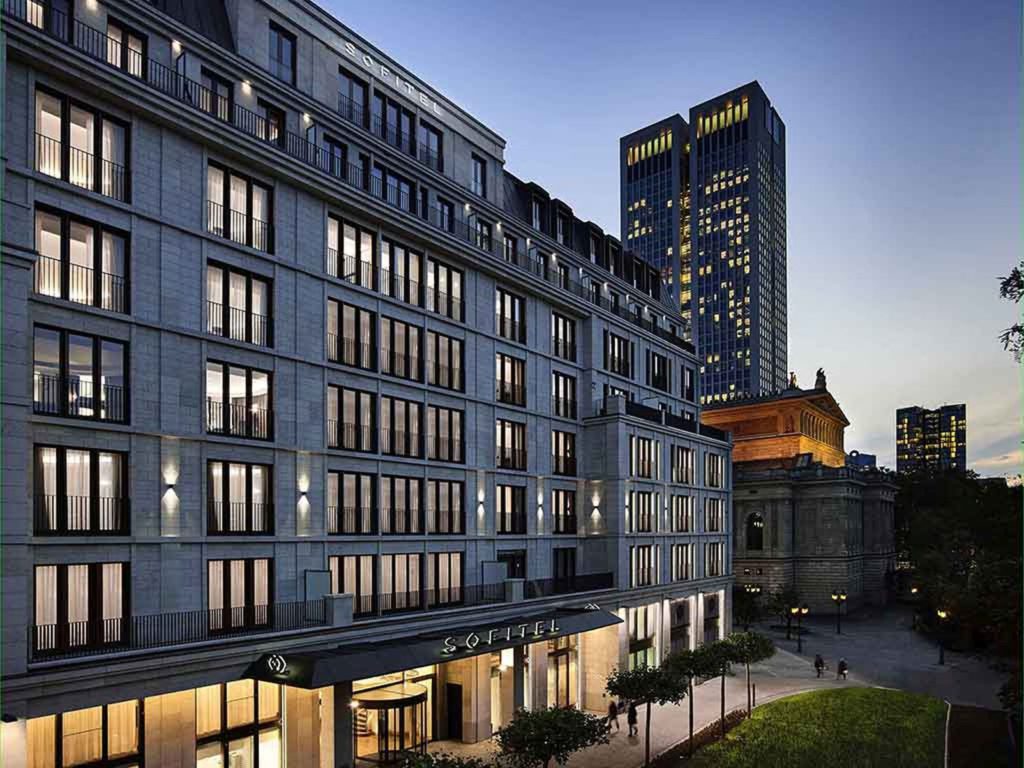
I travelled to Europe with Cover-More Travel Insurance, which has you covered with added safeguards, over and above the typical travel cover, for the likes of medical treatment. Their Options Plan Single-Trip policy offers a host of built-in benefits and protections, including cancellation and rescheduling costs if you are diagnosed with Covid-19. Check out the full range of protections and tailor the level of cover to your requirements. Cover-More’s 24 hour global assistance centre is just a phone call away. https://www.covermore.co.nz

I flew into the heart of Europe with Singapore Airlines who have proudly connected New Zealand to the world for more than 45 years via its award-winning hub, Changi Airport. Operating daily services out of Christchurch and Auckland, my onward flight to Frankfurt was aboard a fabulous A380. Singapore Airlines’ renowned in-flight dining service features an exquisite menu that includes dishes created by the Airline’s International Culinary Panel. I highly recommend the Original White Bee Hoon dish for breakfast. This rice vermicelli dish is soaked in a thick broth, simmered for eight hours, and combined with fresh squid, prawns, eggs and choy sum. For the best fares and seats to suit, head to Singapore Airlines booking site.

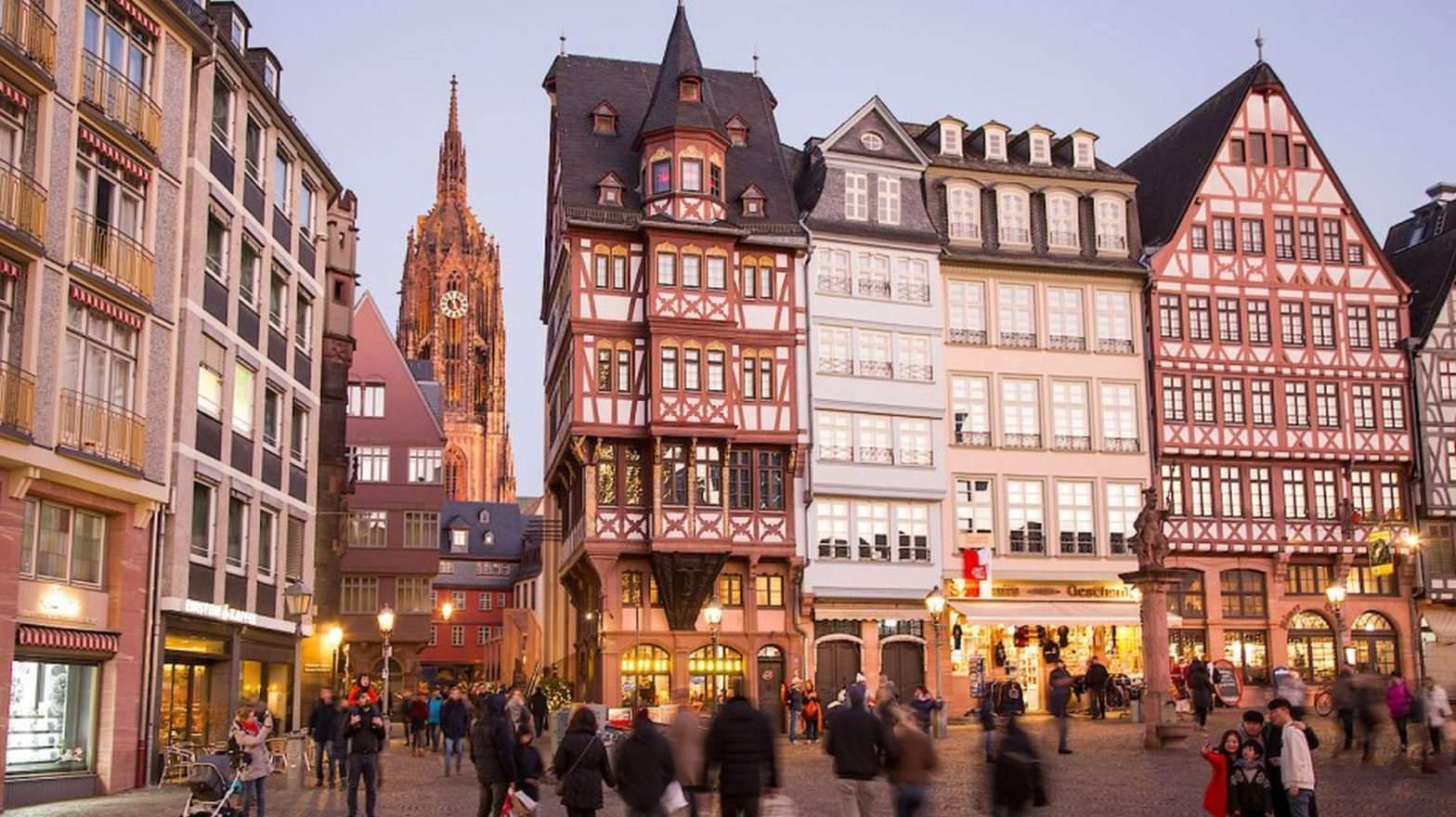
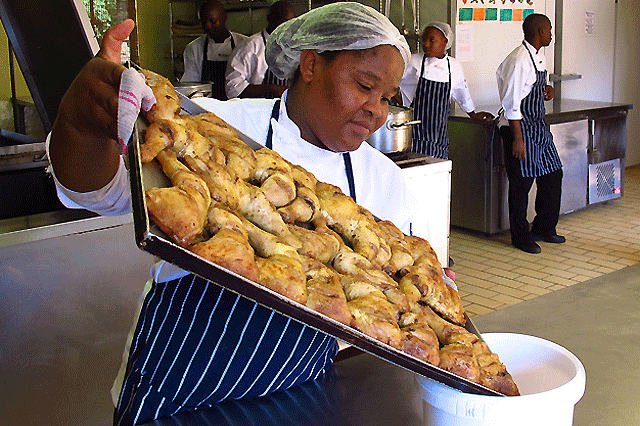

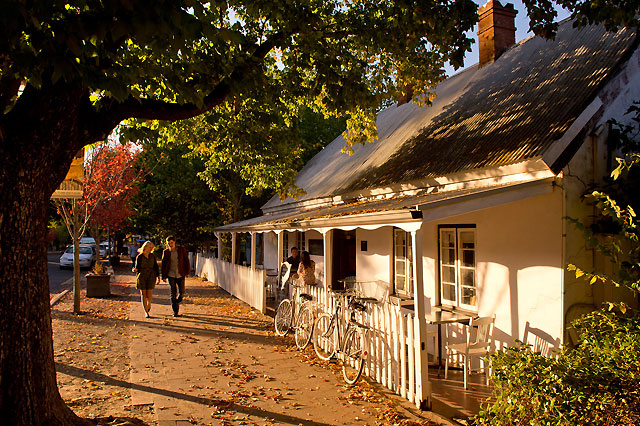
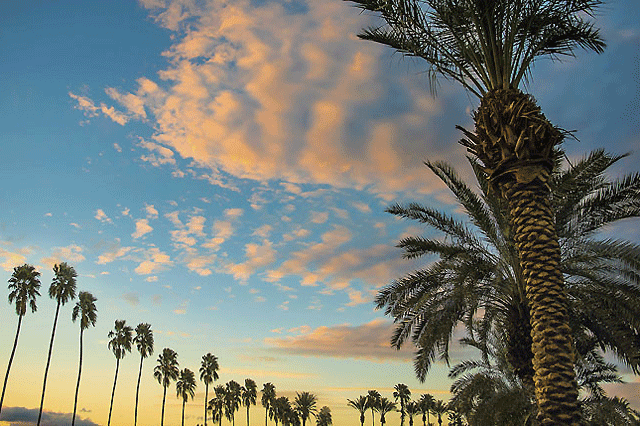
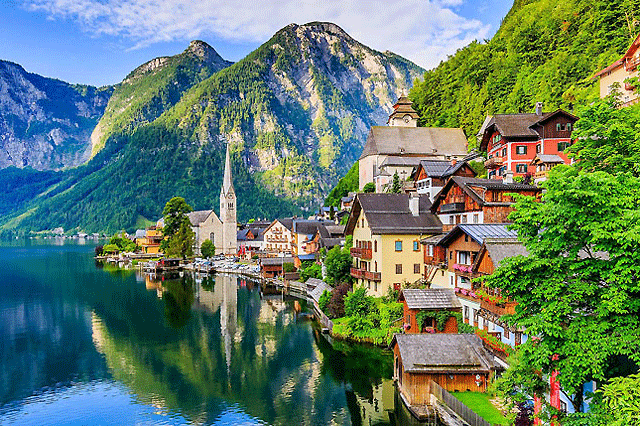

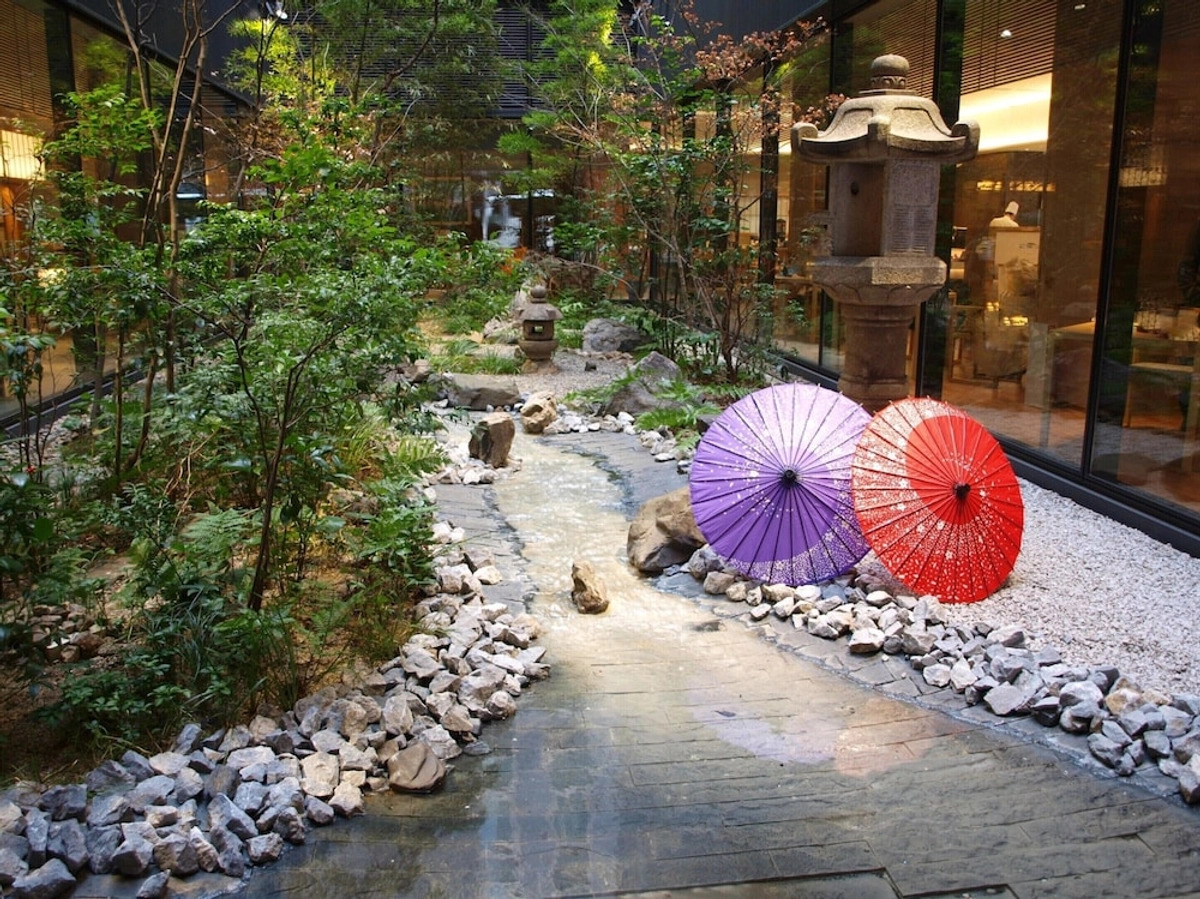



Recent Comments